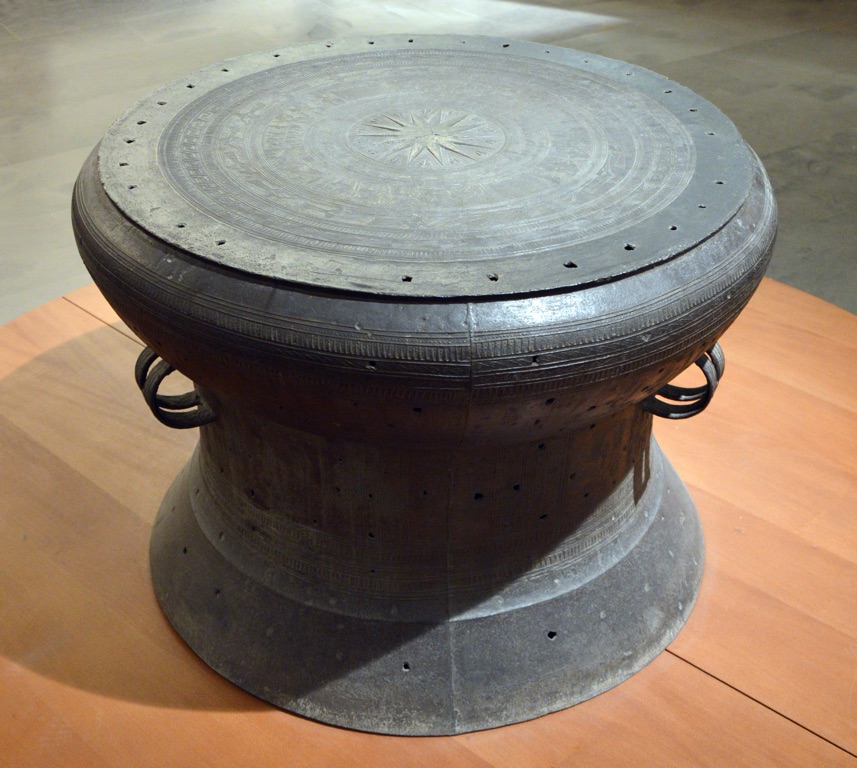The Dong Son drum is an iconic artifact of Southeast Asia, representing a rich cultural heritage. These bronze drums were produced by the Dong Son culture, which flourished in Northern Vietnam from around 600 BCE to the first few centuries CE. They are renowned for their intricate patterns and designs, which often depict scenes of…
Dong Son culture
The Dong Son culture, flourishing from around 600 BC to the first few centuries AD, represents a significant prehistoric period in Southeast Asia, particularly in what is now northern Vietnam. This culture is renowned for its advanced bronze casting, which was used to create artifacts such as drums, weapons, and tools. These artifacts not only highlight the technical prowess of the Dong Son people but also offer insights into their daily lives, beliefs, and societal organization.
One of the most iconic symbols of the Dong Son culture is the bronze drum. These drums were not merely musical instruments but also held deep cultural and religious significance. They were often used in rituals and ceremonies, believed to communicate with the spiritual world. The intricate designs on these drums depict scenes of daily life, warfare, and rituals, providing a visual narrative of the Dong Son society.
The religion of the Dong Son culture was animistic, with a strong emphasis on the worship of ancestors and natural spirits. This belief system is reflected in their burial practices and the ritualistic use of bronze drums. The Dong Son people also had a pantheon of gods associated with natural elements, which they believed governed their lives and the success of their agricultural endeavors.
Socially, the Dong Son culture exhibited a complex societal structure. While there is limited information on the specifics of their social hierarchy, the sophistication of their metalwork and the scale of their constructions suggest a well-organized society with specialized roles. Artifacts indicate that they engaged in agriculture, fishing, and hunting, with rice cultivation playing a central role in their economy.
Daily life in the Dong Son culture revolved around the family and the village community. Houses were typically built on stilts, a common feature in Southeast Asian architecture, which provided protection from floods and wild animals. The Dong Son people were skilled craftsmen, farmers, and fishermen, with bronze casting being a highly regarded skill.
There is little concrete evidence regarding specific rulers, kings, or queens within the Dong Son culture. The society likely had chieftains or leaders who governed local communities, but the lack of written records makes it difficult to identify any individual figures. The political structure might have been based on a system of tribal confederations, which was common in ancient Southeast Asia.
The Dong Son culture engaged in trade and possibly conflicts with neighboring regions. The distribution of Dong Son artifacts across Southeast Asia suggests extensive trade networks. While there is evidence of fortifications and weapons, the specifics of any wars or battles remain largely speculative. The strategic location of the Red River Delta, however, would have made it a valuable and contested area.
The Dong Son culture eventually merged into the larger tapestry of Southeast Asian history, influenced by the expansion of Chinese Han culture and other neighboring civilizations. Despite this, the legacy of the Dong Son culture, particularly its bronze drums, continues to be a symbol of Vietnamese heritage and identity. The Dong Son drums not only represent the artistic and technological achievements of ancient Vietnam but also serve as a lasting testament to the culture’s spiritual beliefs and societal values.

